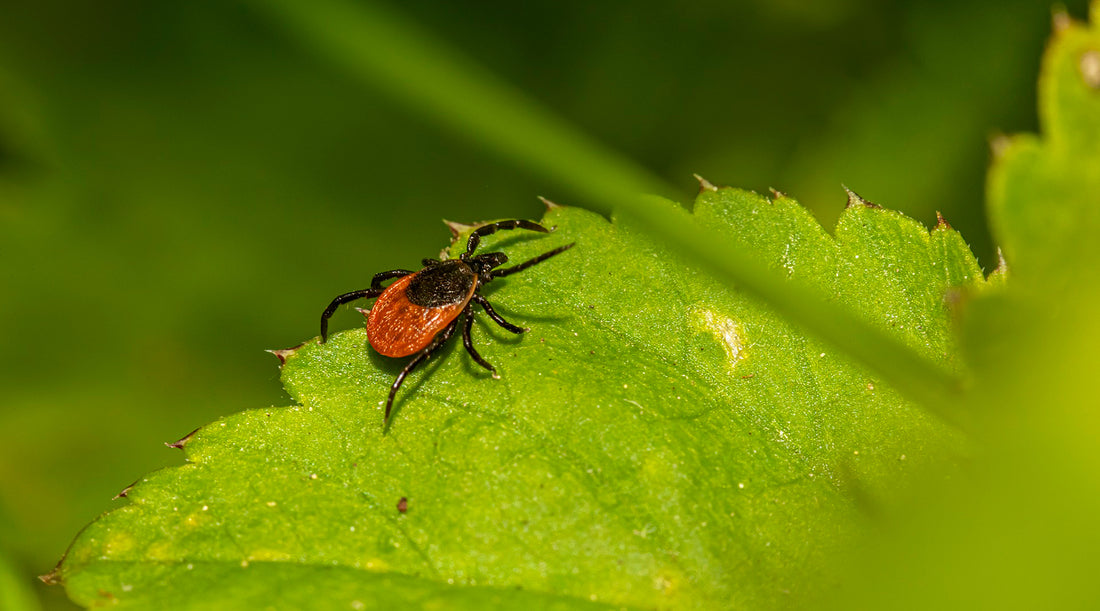As you gear up to hit the trail, the potential threat of tick bites looms in wooded areas, grassy landscapes, and trails.
Ticks, tiny arachnids that feed on blood, can transmit various diseases, making prevention crucial. Below, we'll explore a few effective tips to prevent tick bites and ensure a safe more enjoyable hike.
1. Dress Strategically:
- Wear Long Clothing: Opt for long-sleeved shirts, long pants, and tuck your pants into your socks. This creates a physical barrier, making it harder for ticks to reach your skin.
- Light-Colored Clothing: Choose light-colored fabrics to spot ticks more easily. Dark ticks are more visible against light clothing, allowing for prompt removal.
2. Use Tick Repellent:
- Apply Insect Repellent: Use EPA-approved insect repellents containing DEET, picaridin, or oil of lemon eucalyptus. Apply it to exposed skin and clothing, following product instructions carefully.
- Permethrin-Treated Clothing: Consider treating clothing with permethrin, an insect repellent specifically designed for fabrics. This provides long-lasting protection even after multiple washes.
3. Stay on Trails:
- Avoid High-Grass Areas: Ticks thrive in tall grasses and dense vegetation. Stick to well-maintained trails and avoid wandering through tall grasses to minimize contact with ticks.
- Center of the Trail: When walking on trails, stay in the center to reduce contact with vegetation where ticks may be waiting.
4. Perform Regular Tick Checks:
- Check Your Body: Conduct thorough tick checks on yourself, your companions, and pets after spending time outdoors. Pay close attention to areas like the hairline, underarms, groin, and behind the knees.
- Shower After Outdoor Activities: Showering within two hours of returning indoors can help wash away ticks that have not yet attached.
5. Create Tick-Safe Zones at Home:
- Maintain Your Yard: Keep grass short, remove leaf litter, and create a barrier between wooded areas and your living space. This reduces the likelihood of ticks entering your yard.
- Use Tick Control Products: Consider using tick control products for pets and treating outdoor recreational areas with acaricides to minimize tick populations.
6. Educate Yourself:
- Know Tick Habitats: Learn about the habitats and behaviors of ticks prevalent in your region. Understanding their habits helps you make informed decisions to avoid encounters.
- Identify Tick Species: Different tick species may transmit different diseases. Be familiar with the ticks in your area and the diseases they may carry.
7. Prompt Tick Removal:
- Use Fine-Tipped Tweezers: If you find a tick, use fine-tipped tweezers to grasp it as close to the skin's surface as possible.
- Pull Upward with Steady Pressure: Pull upward with steady pressure, avoiding jerking or twisting. Clean the bite area and your hands with rubbing alcohol, an iodine scrub, or soap and water.
Wrapping up:
Preventing tick bites is essential for a worry-free hiking adventure. By incorporating the seven tips above into your routine, you can significantly reduce the risk of tick encounters and the potential transmission of tick-borne illnesses.
Stay vigilant, dress appropriately, use repellents, and perform regular tick checks to ensure that your time on the trail remains a source of happiness, not dread.

